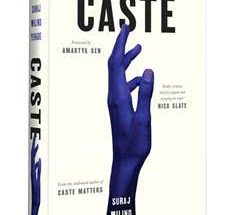Before smartphones and streaming shows, there was a world of colorful panels, clever jokes, and unforgettable characters that made reading pure joy. That world lived in the pages of Tinkle, the legendary Indian comic magazine that has shaped childhoods since the 1980s. With its mix of humor, folklore, science, and adventure, Tinkle wasn’t just a magazine — it was a magical gateway that turned countless Indian kids into lifelong readers.
The Birth of a Reading Revolution
Tinkle was launched in November 1980 by Amar Chitra Katha Pvt. Ltd., under the visionary guidance of Anant Pai — fondly known as Uncle Pai. Already famous for creating the Amar Chitra Katha series, which brought Indian mythology and history to comic form, Pai wanted something different for Tinkle. His goal was simple yet powerful: to create a comic that reflected contemporary Indian life, filled with relatable characters, witty humor, and lessons that felt real.
When Tinkle hit the stands, it instantly stood out. The stories were shorter, sharper, and full of life — designed to spark curiosity while keeping kids laughing and learning. Every issue was a mix of fun and knowledge, blending stories, puzzles, jokes, and science snippets in an irresistible format.
Beloved Characters That Defined an Era
From school classrooms to long train rides, Tinkle’s characters became companions for children across India.
Some of the most beloved include:
- Suppandi — the goofy, lovable servant whose literal interpretations led to hilarious blunders.
- Shikari Shambu — the “brave” hunter who somehow escaped every danger — often by accident!
- Tantri the Mantri — the ever-scheming minister plotting to overthrow the king, only to fail spectacularly every time.
- Kalia the Crow — the clever bird who always found a way to outsmart predators and save his friends.
These characters weren’t just funny; they reflected Indian humor, culture, and everyday quirks — making them instantly relatable to kids everywhere.
A Blend of Fun and Learning
What made Tinkle special was how effortlessly it balanced entertainment with education. Each issue included short stories on science, folklore, history, and moral lessons — presented in a way that kids loved. It was India’s version of “learning through laughter,” long before edutainment became a buzzword.
Children eagerly awaited every new issue, sometimes sharing or trading copies at school. Parents loved it too — because Tinkle encouraged reading, imagination, and curiosity without screens or lectures.
Cultural Impact and Legacy
Over four decades later, Tinkle remains one of India’s longest-running comic magazines, continuing to evolve with time. Its stories are now available digitally, and the magazine still features new characters alongside classics that never fade.
For many Indians, Tinkle wasn’t just a comic — it was a reading companion, a teacher, and a friend. It inspired creativity, humor, and a love for storytelling that shaped a generation.
Today, when children scroll endlessly through digital feeds, the legacy of Tinkle reminds us that the simple joy of flipping comic pages still holds timeless magic.
Why Tinkle Still Matters
In an age where attention spans are short, Tinkle proves that storytelling, when done right, can still capture the imagination of young readers. Its colorful pages encouraged vocabulary, reading comprehension, and critical thinking — all while keeping kids entertained.
More than just nostalgia, Tinkle remains a bridge between the past and the present — showing that great stories never go out of style.
Final Thought
If you grew up in India, you probably smiled every time you saw Suppandi’s silly face or Shikari Shambu’s oversized hat. Tinkle was, and continues to be, more than just a comic — it’s a celebration of Indian creativity, humor, and the joy of reading among kids.
Read more such articles only on- Authors and Books




